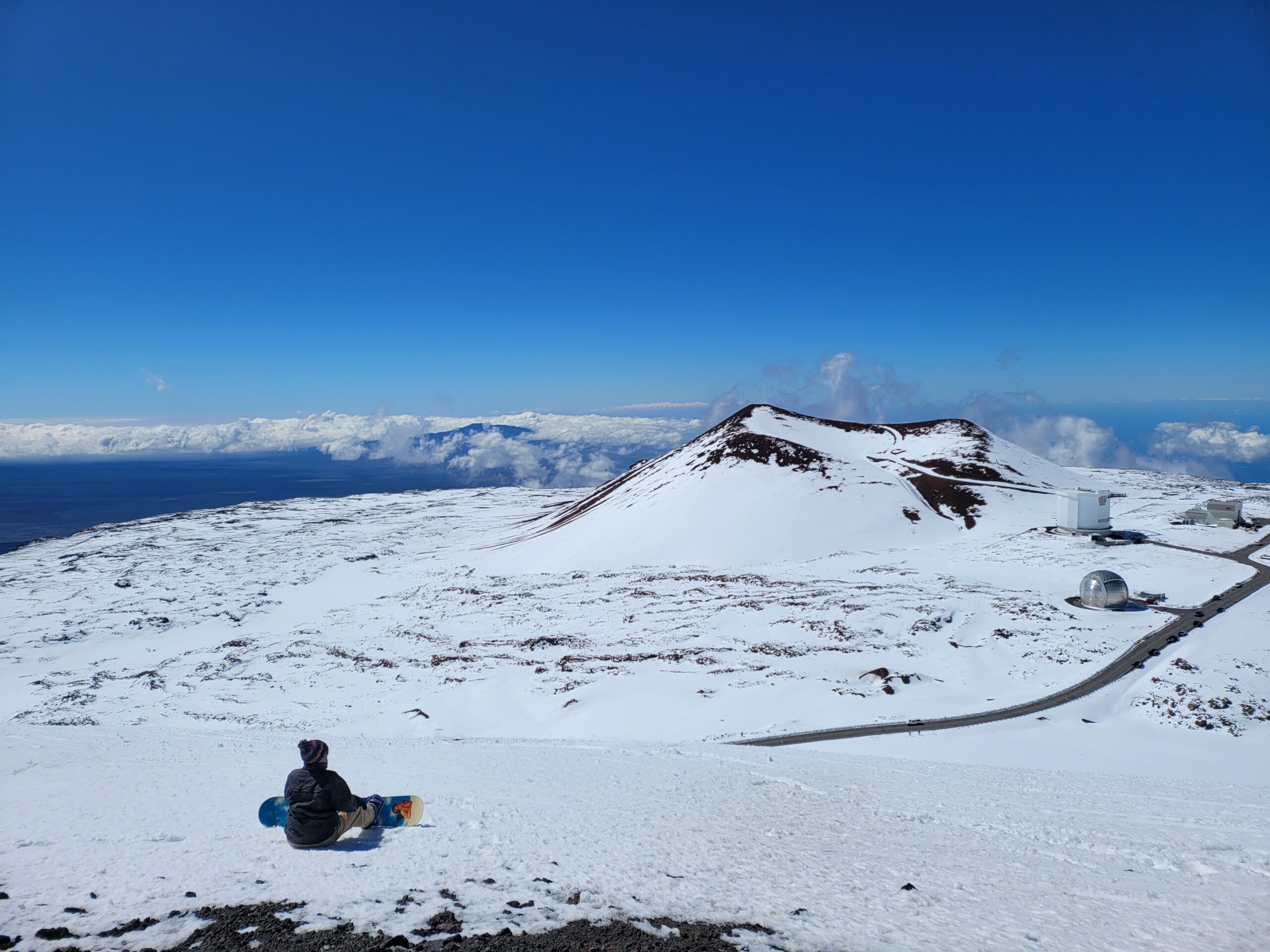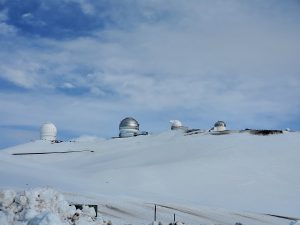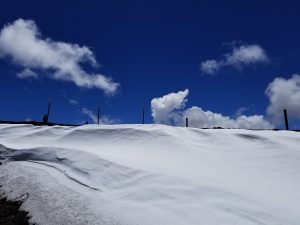
While the calendar says “May” and the map says “Hawaii”, it looks like Old Man Winter will be making a very late season visit to the Aloha State where a Winter Storm Watch is up for heavy snow.
While most people don’t associate the tropical paradise Hawaii is known for with snow, they’re surprised to learn that it does snow in the winter due to the elevation of these volcanic peaks. Mauna Kea is the highest of the bunch at 13,803 feet. Maui’s Haleakala is much lower at 10,023 feet. Because of that difference, Hawaii Island will see snow more frequently than the lower Maui Island. Just one storm last January dropped 2-3 feet of snow on Hawaii Island and created snow drifts that were far deeper.
Earlier this year, the Big Island of Hawaii’s highest peaks were home to hundreds of snow boarders and skiers that took to the volcanic slopes for winter sporting fun. They may return this weekend as a moisture-rich weather system moves through the state of Hawaii today into tomorrow.

The National Weather Service office in Honolulu on the Hawaiian island of Oahu has issued a Winter Storm Watch from tonight through late Friday night for heavy snow, with total snow accumulations of 6″ or more expected. In a statement, the National Weather Service said, “Heavier bursts of snow could be accompanied by gusty winds, low visibility in clouds, and cloud to ground lightning.” With the atmospheric dynamics ripe for thunder snow, conditions may become quite dangerous, especially at elevations over 12,000 feet.
“A Winter Storm Watch means there is potential for significant snow or ice accumulations that may impact the summits. Anyone planning travel to the summits, including hikers and campers, should monitor the latest forecasts and consider postponing their trip until improved weather returns,” the National Weather Service said.
As of 9 am local time, the Mauna Kea Access Road was still open to the public with four wheel drive vehicles. As winter conditions arrive, rangers will shut down access to the road and to the summit. While the roads at the summit are improved to normal highway standards on Mauna Kea to deal with the astronomy related traffic there, the same isn’t true for Mauna Loa. Mauna Loa, known as the world’s largest active volcano, is located across from Mauna Kea on Hawaii’s Big Island. While it’s larger in volume than Mauna Kea, it’s a tad bit shorter, standing up at 13,678 feet compared to Mauna Kea’s 13,803. Because Mauna Loa is an active volcano and Mauna Kea isn’t, there isn’t much in the way of buildings or telescopes on it. While there are science stations and the HI-SEAS Lunar / Mars simulating lab are on Mauna Loa, a single narrow road rides up the slope and it stops short of the summit. While rangers won’t be present to close the Mauna Loa Access Road, people should avoid it until the winter storm passes.

Beyond the snowy summits, conditions will be overcast and wet elsewhere in Hawaii. Cloudy skies and increasing moisture associated with an upper disturbance and surface trough in the region will lead to increasing rainfall chances through Saturday. According to the National Weather Service, heavy showers and a few storms will become a possibility through to the start of the weekend, which increases the threat for localized flash flooding.
Because of the threat of flooding, the National Weather Service has issued a Flash Flood Watch state-wide across Hawaii for this storm. Flood prone roads and other low lying areas could become closed due to elevated runoff and overflowing streams. Urban areas may receive more significant flooding and property damage due to rapid runoff. As they do in heavy rain event, the National Weather Service urges people to “turn around, don’t drown; never drive through flood waters.”
Conditions should gradually begin to improve and trend back toward a typical trade wind pattern over the weekend through early next week. The system responsible for the heavy snow and rain will move north away from Hawaii, allowing for high pressure to return.